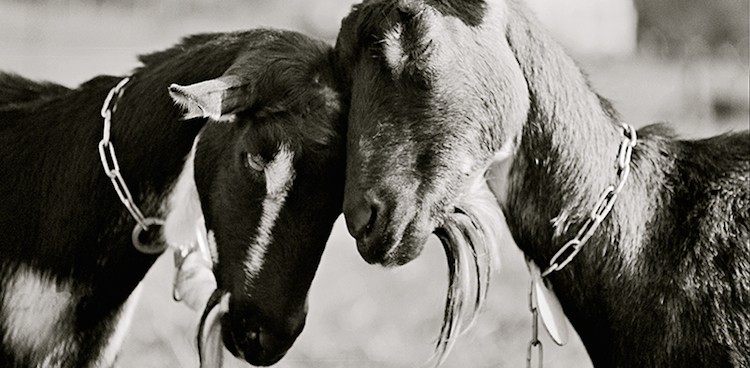
Origin
All Alpine breeds originated in the European Alps, hence their name. Like other European goats, they are descended from a Middle Eastern ancestor known as the bezoar goat. Over time, shepherds selected them for improved milk production. The American Alpine dates to 1922, when a group of goat aficionados imported a herd of twenty-one French Alpines, which were subsequently crossed with other varieties to produce a slightly larger animal.
Appearance
American Alpines have angular bodies with long slender necks. Unlike Nubian goats—which have rounded (or Roman) noses and floppy, houndlike ears—American Alpines have flat, or slightly dished, noses and erect ears. In addition, while some breeds have a consistent color (such as the all-white Saanen or the bay Oberhasli), the coloring of American Alpines varies greatly from white to shades of fawn, gray, brown, black, red, and piebald. For those who raise the goats, anticipating the markings of each new kid is a favorite pastime.
Milk
An American Alpine produces, on average, a gallon of milk per day, depending on its feed and its genes. That translates into 4,836 pounds of milk and 176 pounds of butterfat during a 305-day milking season. The current record for American Alpine milk production was set by Donnie’s Pride Lois, a New York doe that produced 6,416 pounds of milk and 309 pounds of butterfat during the 1982 milking season.
The breed has a five-month gestation period, and although most does are bred annually, they can produce milk for up to three years between freshenings—that is, without being rebred. This ability is important to farmers, because it allows continuous milk production without the need to incur breeding fees.
Cheeses
Cheesemakers who have won awards working with the milk of American Alpines include four California dairies—Redwood Hill Farm, Cypress Grove, Pug’s Leap, and Harley Farms—as well as Capriole in Indiana and Twig Farm in Vermont. In the hands of these artisans, the milk from this sturdy breed can be used to make either fresh or aged cheeses.




One thought on “American Alpine Goats”